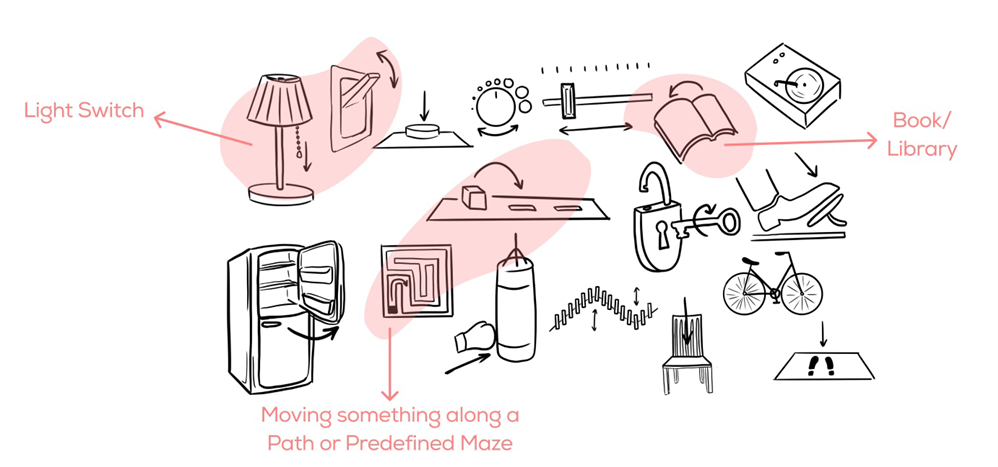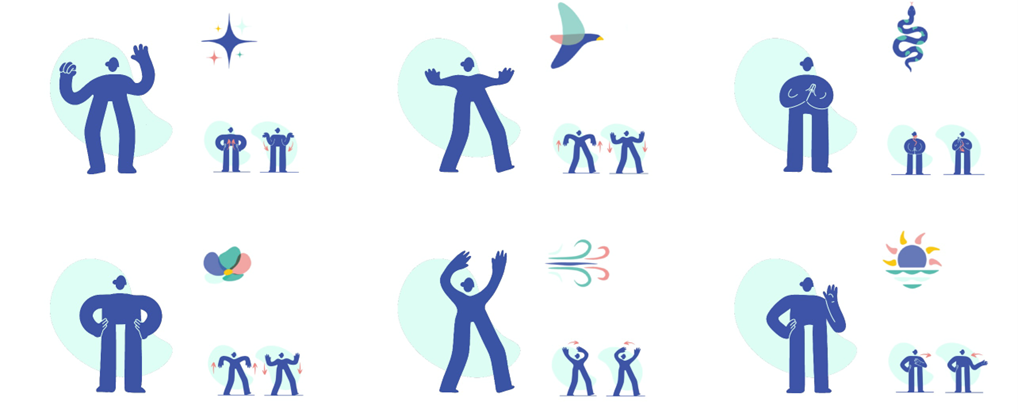Switch&Slide
Project information
- Category: Product Design
- Duration: 3 weeks
- Team: Zilu Tang, Alice Gagliardo, Charlotte Bronwasser, Zeynep Can
- Role: Researcher, Designer
- Tools: Figma, Empathy tool
A Tangible Interface for Cognitive and Physical Therapy for Elderly
Project Description
This product was made for people with a physio-psychological illnesses such as Dementia, Multiple Sclerosis (MS) and Parkinson’s disease,
who wanted to do the Switch2Move dance therapy (https://switch2move.com/) with videos, independently at home.
The redesign was meant to include the same user group but in a different context:
living in a private care-facility where they would do the Switch2Move sessions in a group-setting.
For this, the final design concept Switch&Slide was created: a large interactive board, with the dimensions of 500 mm X 200 mm. So that it would be possible to place the product on a table in front of the television, and would still be easy-to-operate for people with limited dexterity. Important, as the target user (regardless of the diagnosis Dementia, MS or Parkinson’s disease), all had similar difficulties with fine motor skills.
The interaction style, and look & feel of the buttons and sliders were dictated by the research done and result of the empathy tool testing. All elements are therefore also rounded, which gives a gentle and harmonious feeling. With the switch on the left-hand side of the product the user can turn the television on or off. The slider on the right-hand side is used to increase the volume (physically) up or down, intuitively linking it to a higher and lower volume.
The sliders in the middle, are used to interact with the videos. By sliding the tiles up and down, a waiting list can be created by the user(s). The attached tiles with symbols, relate back to the movements of the different dances in a coherent manner. These tiles are interchangeable, which gives the care-home the opportunity to set-up a Switch2Move therapy session that fits the group of users doing the therapy. Caregivers can pick or help the users pick tiles for different dances, depending on the progression of their disease(s). They can also encourage them to interact with the product.
As said before, the symbols relate to the dances of the therapy, based on the movements. For the symbols we choose nature or animal elements, such as the sun, wind, birds, etc. This is because the elderly are usually more familiar with these elements and these elements also give a sense of calm. Their playful look perhaps sparks an interest for interaction.
Through this empathy-driven design process, using insights from tools like personas, user experience mapping and the empathy tool, we created the concept of Switch&Slide. Although real-life testing with the user was not possible for us in the given time-span for the challenge, we believe our final design concept accommodates a target user with physical and cognitive limitations. The use of familiar symbols, round forms and simple interactions hopefully resonates with the user and enhances their participation in the Switch2Move therapy.




